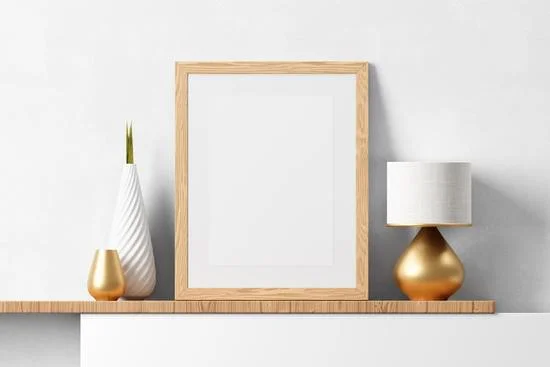Are you looking to learn how to decorate a simple birthday cake at home? Creating a beautifully decorated cake for a special occasion doesn’t have to be daunting or expensive. In fact, with the right tools and techniques, you can easily achieve professional-looking results in the comfort of your own kitchen. This article will guide you through the process of decorating a birthday cake at home, covering everything from essential tools and ingredients to creative finishing touches.
When it comes to celebrating birthdays, the cake is often the centerpiece of the festivities. A well-decorated cake not only adds to the excitement of the occasion but also shows the thought and effort put into making someone’s day extra special. In this post, we’ll explore various decorating techniques that are accessible to beginners and enthusiasts alike, allowing you to unleash your creativity and produce stunning results.
From choosing the right cake base to incorporating color and flair, we’ll cover all aspects of cake decorating in an approachable manner. Whether you’re a beginner or looking to enhance your skills, this article will provide valuable tips and step-by-step instructions for creating beautiful birthday cakes at home. So let’s get started on this deliciously creative journey.
Essential Tools and Ingredients
Decorating a birthday cake at home can be a delightful and rewarding experience, especially when armed with the essential tools and ingredients. Whether you’re a beginner or an experienced baker, having the right equipment and supplies is crucial for achieving professional-looking results. In this section, we will explore the necessary tools and ingredients for cake decorating and provide detailed explanations of their specific purposes.
Tools for Cake Decorating
One of the essential tools for cake decorating is a turntable, which allows for easy icing application and smooth rotation of the cake while working on it. Additionally, offset spatulas are indispensable for spreading frosting and creating clean edges on the cake. Piping bags and various tips are essential for creating intricate designs and patterns, while a cake leveler ensures even layers when stacking multiple cakes.
Key Ingredients for Frosting
When it comes to frosting a cake, key ingredients include butter or shortening, powdered sugar, vanilla extract, and milk or heavy cream. These basic components can be combined to create delicious buttercream or cream cheese frostings that are versatile and easy to work with. It’s important to use high-quality ingredients to achieve a smooth and creamy texture in your frosting.
Affordable Options
For those on a budget or looking for affordable options, there are plenty of cost-effective alternatives available. Instead of investing in expensive piping bags, reusable plastic bags can be used with different types of tips. Additionally, homemade food coloring can be made using natural ingredients such as beets or turmeric, providing vibrant hues without the need for artificial dyes. By making use of easily accessible options, you can create stunning cakes without breaking the bank.
By understanding the importance of these tools and ingredients in cake decorating, you can elevate your skills in creating beautifully decorated birthday cakes at home. With the right supplies at your disposal, you’ll be well-equipped to embark on your creative journey in cake decoration while saving time and money in the process.
Choosing the Right Cake Base
When it comes to decorating a birthday cake at home, one of the most important decisions is choosing the right cake base. The perfect cake base serves as the foundation for all your creative decorations and adds to the overall flavor and texture of the finished product. When selecting a cake base, consider factors such as flavor, size, and texture to ensure that it complements your decorating style and satisfies your taste preferences.
For those who prefer to bake their own cake from scratch, there are numerous homemade recipes available that cater to different flavor profiles and dietary restrictions. Classic options like vanilla and chocolate are always crowd-pleasers, while more unique choices like red velvet or lemon add a special touch to birthday celebrations. Additionally, there are plenty of recipes for gluten-free, vegan, or dairy-free cakes for those with specific dietary needs.
On the other hand, if baking from scratch is not feasible due to time constraints or lack of baking experience, store-bought cake mixes or pre-made cakes can be equally convenient options for decorating. Many grocery stores offer a variety of flavors and sizes, allowing you to select a cake base that best suits your preferences without requiring extensive preparation time.
Ultimately, the ideal cake base is one that aligns with your desired taste and aesthetic goals for the final decorated product. Whether homemade or store-bought, making a conscious choice for the cake base sets the stage for an enjoyable and successful decorating experience.
| Aspect | Considerations |
|---|---|
| Flavor | Choose a flavor that complements the decorations and satisfies taste preferences. |
| Size | Select an appropriate size based on the number of servings needed. |
| Texture | Determine if a moist and tender texture or a denser consistency is preferred. |
Simple Frosting and Icing Techniques
Decorating a birthday cake with frosting and icing is a fundamental part of creating a visually appealing and delicious treat. Whether it’s for a child’s birthday, a family gathering, or a special celebration, the right frosting and icing techniques can elevate a simple cake to an impressive centerpiece.
In this section, we will delve into the step-by-step instructions for creating and applying different types of frosting and icing. From classic buttercream to elegant fondant and intricate royal icing designs, mastering these techniques will allow you to personalize your cake with creativity and flair.
When it comes to frosting a cake, one of the most popular options is buttercream. This smooth and creamy frosting is easy to work with and can be flavored and colored in countless ways. It’s perfect for creating a clean canvas on your cake before adding decorative elements.
Fondant, on the other hand, offers a more polished finish and allows for intricate designs and sculpted details. While it may require some practice to master, fondant can give your cake a professional appearance that wows guests.
Royal icing is another versatile option that hardens when dry, making it ideal for intricate piping work or creating edible decorations such as flowers or lace patterns. Learning how to make and work with these different types of frosting and icing will give you the flexibility to bring any cake design idea to life.
Achieving smooth and clean frosting application is essential for creating an attractive finished product. Whether you’re using buttercream or fondant, ensuring an even layer without visible blemishes is key. Techniques such as using a bench scraper or offset spatula can help achieve that professional look on your homemade birthday cake. Mastering these simple frosting and icing techniques will enhance the overall presentation of your creation, setting the stage for adding personalized decorations in the next steps of this process.
Basic Piping and Decoration Ideas
Decorating a birthday cake with piping and simple decorations can elevate the overall look of the dessert, making it a visually appealing centerpiece for any celebration. Piping bags and tips are essential tools for creating intricate designs, patterns, and textures on the cake’s surface. To get started with basic piping and decoration ideas, it’s important to understand the different types of piping tips and their uses.
There are various types of piping tips that can be used to create different designs and effects on a cake. Round tips are perfect for creating dots, writing messages, or outlining shapes on the cake. Star tips are great for producing textured borders, stars, flowers, or shells. Leaf tips mimic natural foliage and are ideal for adding greenery or decorative leaves to a design.
In addition to using different piping tips, experimenting with different colors of frosting can also enhance the visual appeal of the cake. By using multiple colors in one piping bag or creating ombre effects with varying shades of icing, decorators can achieve dynamic and eye-catching designs. Furthermore, incorporating edible decorations such as sprinkles, dragees (edible metallic balls), fondant cutouts, or edible flowers can add flair and personality to the cake design.
Mastering basic piping techniques allows for endless creative possibilities when decorating a birthday cake at home. With just a few tools and some practice, anyone can achieve professional-looking results right in their own kitchen. It’s all about exploring different designs, playing with color combinations, and letting creativity take center stage in celebrating special occasions through beautifully decorated cakes.
| Piping Tips | Uses |
|---|---|
| Round Tips | Dots, writing messages |
| Star Tips | Borders, stars, flowers |
| Leaf Tips | Foliage designs |
Incorporating Color and Flair
Decorating a birthday cake is not just about taste but also about creating an eye-catching and visually appealing dessert. One of the key elements in cake decoration is the use of color and flair, which can transform a simple cake into a stunning centerpiece for any celebration. Here are some ideas and tips for incorporating color and flair into your homemade birthday cake:
- Utilize Food Coloring: Consider using gel or liquid food coloring to add vibrant hues to your frosting or icing. Whether you want a rainbow effect or a specific color scheme to match the theme of the party, food coloring allows you to customize the look of your cake.
- Edible Decorations: Explore edible decorations such as sprinkles, edible glitter, or even edible flowers to add texture and aesthetic appeal to your cake. These embellishments can instantly elevate the overall look of the dessert.
- Themed Decor: For themed birthday celebrations, consider incorporating specific decorative elements that represent the theme. This could include using fondant cutouts, candy pieces, or themed toppers to tie the cake design to the overall party theme.
When it comes to adding color and flair to a birthday cake, creativity knows no bounds. Experiment with different color combinations, try out new decorating techniques, and don’t be afraid to infuse your personal touch into the design. Making a statement with your homemade decorated birthday cake can truly enhance the celebratory atmosphere and delight your guests.
Remember that while incorporating color and flair is important in decorating a birthday cake, it’s equally crucial not to overwhelm the overall design. Finding a balance between vibrant elements and cohesive aesthetics will help create a visually striking yet harmonious cake that will be adored by everyone at the celebration.
Creative Finishing Touches
Adding the final touches to a birthday cake can truly elevate its appearance and make it stand out. There are various creative ways to add texture, dimension, and depth to the decoration, making the cake a stunning centerpiece for any celebration.
Texture and Dimension
To enhance the visual appeal of the cake, consider incorporating texture into the design. This can be achieved through the use of textured frosting techniques, such as ruffles or basketweave patterns. Additionally, adding edible decorations like chocolate shavings, crushed nuts, or cookie crumbles can provide an interesting contrast in both texture and taste.
Edible Flowers and Decorations
One way to give your birthday cake a beautiful and natural touch is by using edible flowers as decoration. Fresh blooms like roses, pansies, or violets can be delicately placed on top of the cake for an elegant and sophisticated look. Alternatively, edible flower-shaped decorations made from fondant or gum paste can also be used to adorn the cake with intricately crafted floral designs.
Sprinkles and Edible Glitter
For a fun and festive finishing touch, sprinkles and edible glitter can add a pop of color and sparkle to the cake. Sprinkles come in a variety of shapes, sizes, and colors, allowing for endless decoration possibilities. Edible glitter adds a shimmering effect that makes the cake visually captivating and perfect for special occasions.
By experimenting with these creative finishing touches and incorporating them into your cake decorating process, you can transform a simple birthday cake into a stunning work of art that will impress guests and delight the guest of honor. With attention to detail and a touch of creativity, every homemade birthday cake can become a memorable centerpiece for any celebration.
Troubleshooting and Expert Tips
When it comes to decorating a birthday cake at home, it’s not uncommon to encounter some challenges along the way. However, with the right knowledge and a few expert tips, you can overcome these obstacles and achieve professional-looking results. Here are some common issues in cake decorating and how to troubleshoot them:
1. Crumbly Frosting: If you find that your frosting is too crumbly or difficult to work with, try adding a small amount of milk or cream to soften it. Alternatively, you can use a thin layer of frosting as a crumb coat and then refrigerate the cake before applying the final layer.
2. Uneven Icing: Achieving smooth and even icing on a cake can be tricky, but there are a few tricks to help improve the result. Using a bench scraper or offset spatula dipped in hot water can help create a smoother finish. Additionally, chilling the cake between layers of icing can also aid in achieving a cleaner look.
3. Piping Mishaps: If you’re having trouble with your piping bag or creating consistent designs, practice on parchment paper before attempting to decorate the actual cake. This will allow you to refine your technique and gain more control over your piping skills.
Expert Tips for Professional Results:
– Invest in high-quality tools: While it’s possible to decorate a cake with basic equipment, investing in quality piping bags, tips, and spatulas can make a significant difference in achieving polished results.
– Embrace imperfections: Not every decoration will turn out perfectly, and that’s okay. Embracing imperfections as part of the homemade charm can alleviate stress and enhance creativity.
– Get creative with textures: Adding texture to your cake decorations through techniques such as ruffles, brush embroidery, or hand-painting can add depth and visual interest to your design.
By understanding how to troubleshoot common issues and implement expert tips, you’ll be better equipped to tackle any challenges that arise during the cake decorating process. Remember that practice makes perfect, so don’t be discouraged by initial setbacks-keep experimenting and honing your skills for stunning homemade birthday cakes.
Conclusion and Celebration
In conclusion, decorating a simple birthday cake at home can be a rewarding and enjoyable experience. By following the essential tips and techniques outlined in this article, individuals can elevate their homemade cakes to professional-looking masterpieces. From selecting the right cake base to incorporating color, flair, and creative finishing touches, there are endless opportunities to showcase creativity and celebrate special occasions with beautifully decorated cakes.
It is important for readers to remember that practice makes perfect when it comes to cake decorating. While some may encounter challenges along the way, it is all part of the learning process. Embracing creativity and experimenting with different techniques can lead to unique and stunning results. The most important thing is to have fun and enjoy the process of creating something special for loved ones.
As we conclude this article, I encourage readers to take on the challenge of decorating a birthday cake at home for their next celebration. Whether it’s a simple design with basic piping or an elaborate creation with vibrant colors and themed decorations, the joy of seeing loved ones’ faces light up in delight will make every moment spent on decorating worthwhile.
Let this be an opportunity to embrace your creativity, celebrate special moments, and create lasting memories through beautifully adorned homemade cakes.
Frequently Asked Questions
How to Decorate Cake in Home Simple?
Decorating a cake at home can be simple with a few basic techniques. Start by choosing a theme or color scheme for your cake. Then, gather the necessary tools such as piping bags, tips, and spatulas.
You can use buttercream frosting to create simple swirls, dots, or lines on the cake. Adding edible flowers, sprinkles, or small fondant decorations can also add a nice touch to the cake.
How to Decorate a Plain Birthday Cake?
To decorate a plain birthday cake, start by adding a layer of frosting to the entire cake using a spatula. Then, you can get creative with piping different designs such as rosettes, stars, or borders around the edges of the cake using different colored frosting.
Adding edible glitter or sprinkles on top can also make the cake more festive. Finally, consider adding personalized touches like writing a birthday message with icing on top of the cake.
How to Decorate a Cake for Beginners?
For beginners, decorating a cake can be less intimidating if you start with simple techniques. Begin by practicing basic frosting skills such as smoothing the surface and creating even borders around the edges of the cake.
Use ready-made decorations like edible pearls or pre-made fondant shapes to add visual interest without having to do intricate piping work. As you gain confidence, you can gradually try more advanced techniques like using different piping tips or experimenting with fondant decorations.

I’m thrilled to be your companion on this exciting journey through the world of home decor and design. With a passion for turning houses into homes and a keen eye for the finer details, I’m here to help you transform your living spaces into beautiful, functional, and meaningful havens.





